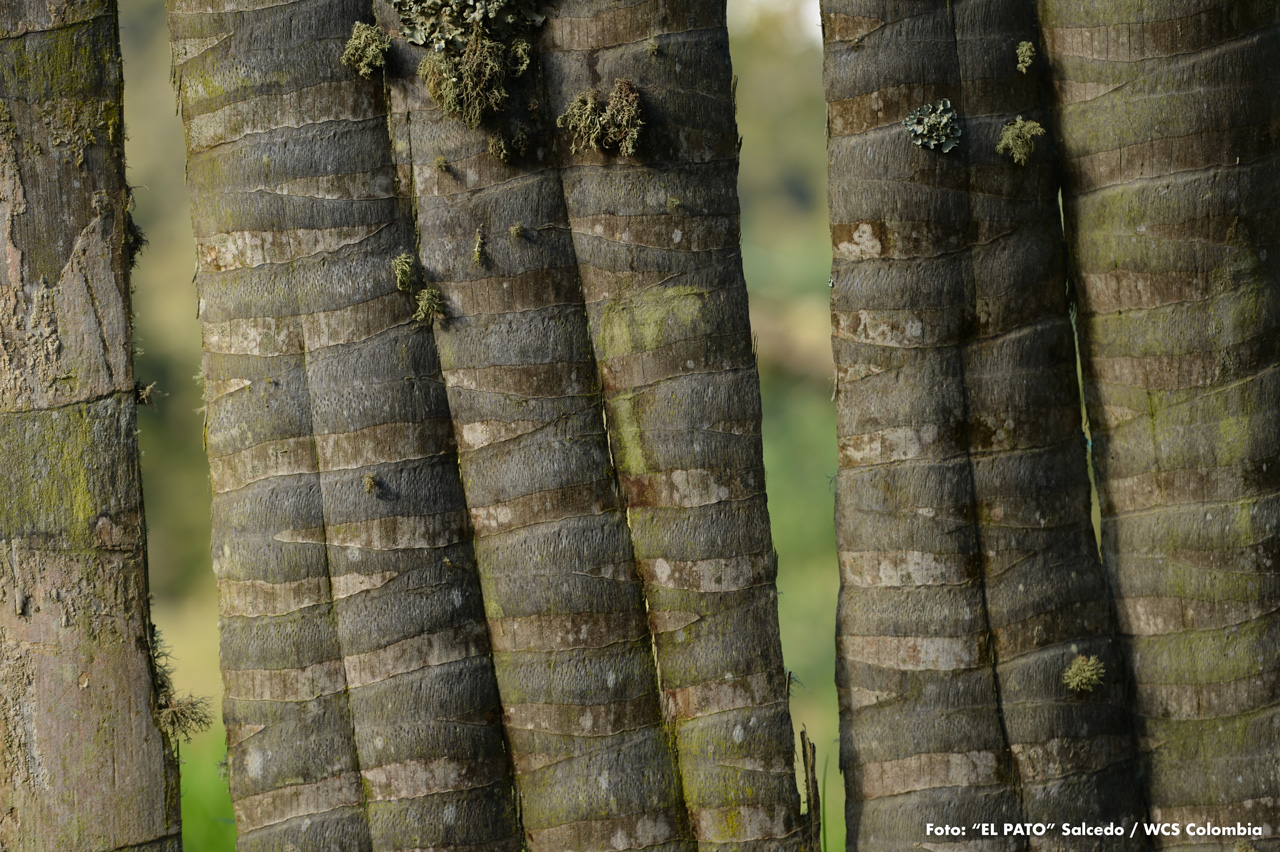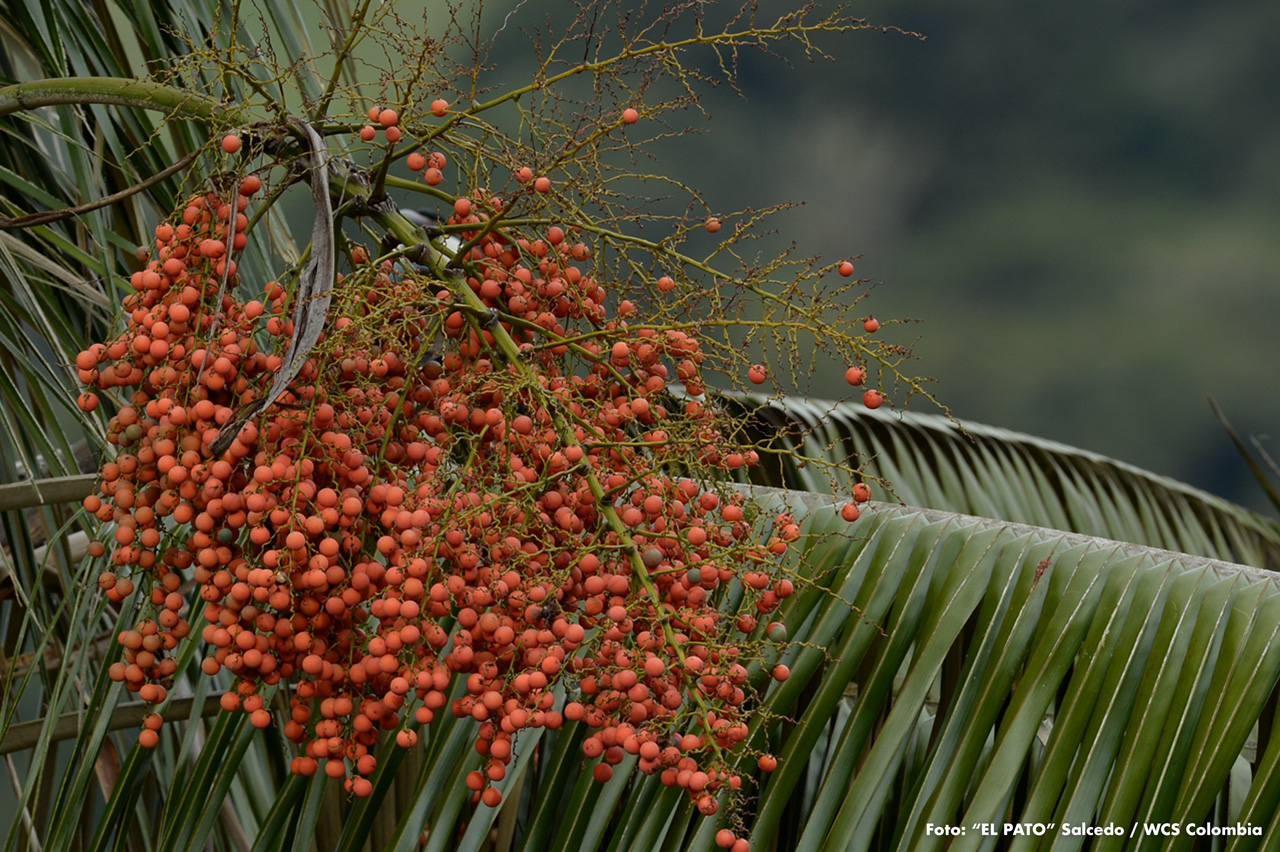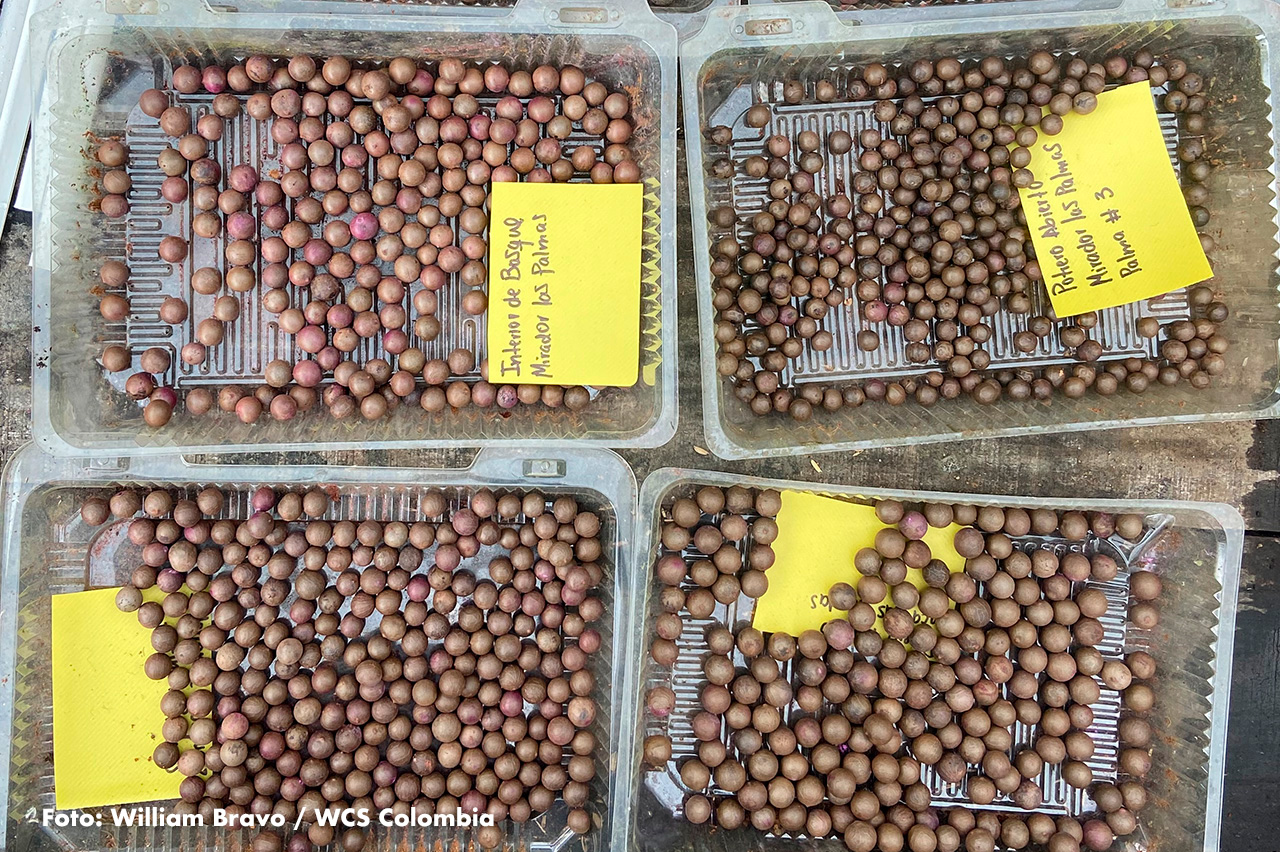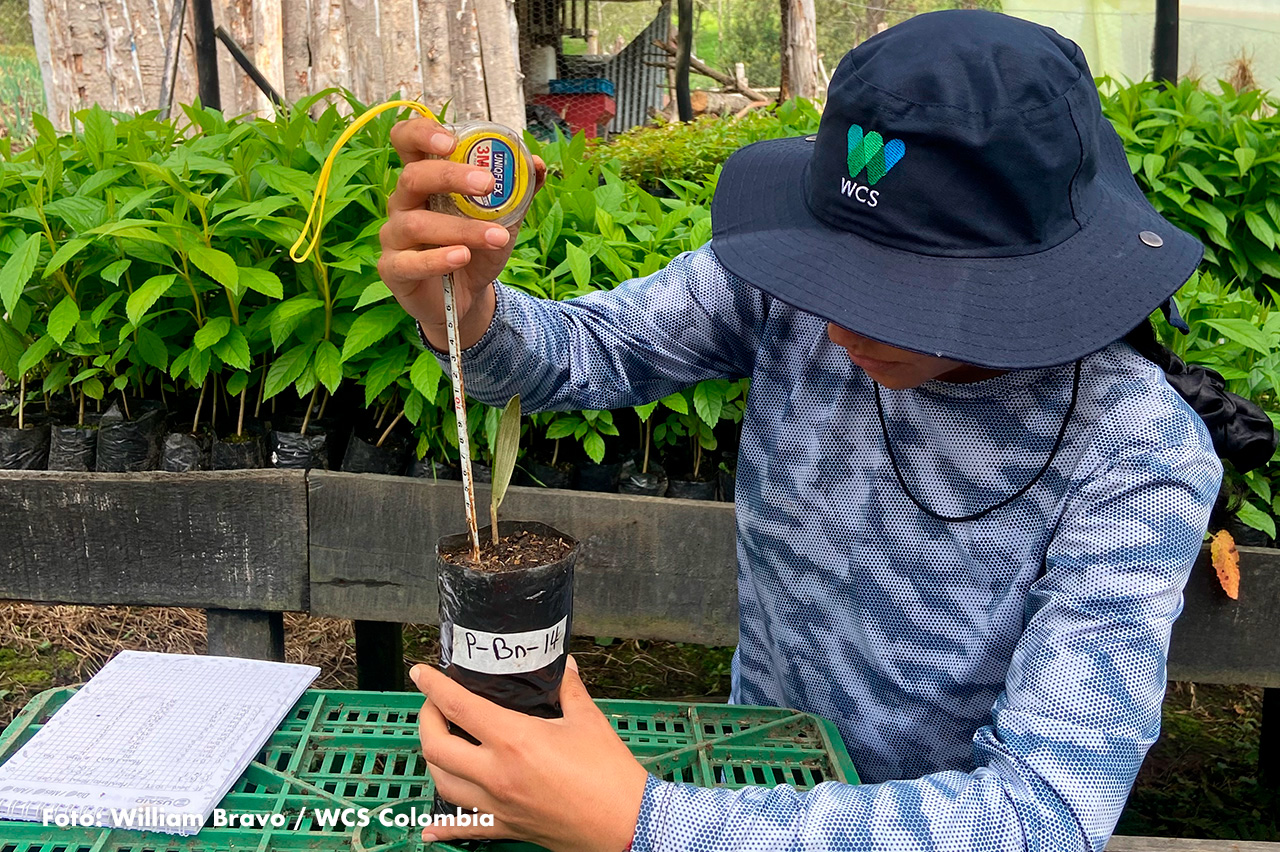The strategy for the recovery of this emblematic species includes research into the most effective methods for germinating high-quality seeds in shorter periods of time, with the goal of planting 2,000 palms on various farms throughout the municipality.

By Carolina Obregón Sánchez
Roncesvalles is located in the southwest of Tolima, in the middle of the Central Mountain Range, and is one of the places in Colombia where the Quindío wax palm (Ceroxylon quindiuense) livess. However, in what seems like a “legend of national botany,” hundreds of these palms died there during the 1990s and early 2000s. After losing their fronds, only their bare trunks remained standing. The cause of this phenomenon—locally known as the “Ronces disease”—still lacks a definitive scientific explanation.
But the local decline of the species is not only due to this mysterious event. For years, the fronds of young palms (which have not yet developed a trunk) were harvested to make Palm Sunday bouquets, interfering with their already slow growth and often leading to their death. On top of this, the palm’s wood was long used to build fences or make troughs for carrying water. As if that weren’t enough, the species has also been cornered by the loss of its natural habitat due to the expansion of agricultural frontiers, which has replaced forests with large pastures—though a few solitary palms can still be found standing.

Many of these threats also extend to other areas of the country where the wax palm grows. This situation has led the species to be included not only in Colombia’s official list of threatened wildlife, but also to be classified as “Vulnerable” (VU) by the International Union for Conservation of Nature (IUCN).
The importance of the wax palm is both cultural and ecological. Not for nothing was it declared Colombia’s national tree in 1985. Moreover, it plays a key ecological role as a strategic species that benefits many others. Its colorful fruits, for example, serve as food for various birds such as toucans, guans, thrushes, and especially the yellow-eared parrot (Ognorrhynchus icterotis), an endemic and also threatened species. In light of this, the “Conservation, Management, and Sustainable Use Plan for the Wax Palm” was published in 2015, outlining the actions needed for its protection.
Recovering a local symbol
“Here in Ronces, people have always cared for the wax palm because they find it beautiful. That’s why the custom has been to leave one or two standing in the pastures. But real awareness of its importance began around 2005, thanks to an outreach campaign that taught us about its connection to the yellow-eared parrot. Both species were declared municipal symbols, and a festival was created in their honor,” says Ángela Hernández, who worked as a nursery technician with the ‘Saldaña River: A Basin of Life’ program.
Four years ago, with the support of the Franklinia Foundation, the program began efforts focused on restoring populations of several threatened plant species, including the wax palm. In the case of the wax palm specifically, there had been a prior attempt to propagate its seeds, but the results fell short of expectations.

After that unsuccessful attempt, around 2023, researchers began implementing a new method based on rescuing seedlings that were between 10 and 15 centimeters tall. These seedlings were then taken to a nursery, where they were potted, watered, kept in the shade, and fertilized until they reached an optimal height. “Once they reach an average of 45 centimeters, we take them out to the field for planting,” explains William Bravo, a restoration specialist at WCS. “This way,” he adds, “we hope to reintroduce around 2,000 palms over the next two years.”
One of the first plantings took place with the support of Hocol and the Fundación del Alto Magdalena, on a property called Ecopalmares—a farm that is on its way to being declared a Civil Society Natural Reserve (RNSC). Juan Gabriel Forero, the owner, reports that “the 200 seedlings planted there are growing well.”
Forero, an agricultural sciences professional, shares that his parents—both of peasant origin—acquired the farm in 1984. Over the past 20 years, the property has hosted a range of initiatives, including reforestation efforts, the implementation of silvopastoral systems, environmental compensation plans, and research related to the growth of the wax palm.

Ecopalmares was selected for this planting because it offers the necessary conditions. “For the reintroduction of this species,” explains William, “we are selecting optimal sites—ideally forests with cedar or oak trees that provide shade and humidity. These conditions support root establishment and allow the young palms to grow until they reach adulthood, which can take 40 to 50 years. In addition,” he adds, “these areas must be free from threats like deforestation or extensive cattle grazing.”
It’s worth noting that on this property, the palm planting is carried out in parallel with the establishment of live fences, protective barriers, and silvopastoral systems that combine other tree species. In this setting, each palm is protected by a fence to ensure its survival.
Sourcing the best seeds
“There was a huge explosion of seeds. In Roncesvalles, each year, the palms produce massive clusters of fruits, which can be found in abundance along roadsides, within forests, and even in pastures. However, many of these fruits don’t make it—either because they’ve been exposed to too much sun or because cattle have chewed on them,” says Ángela, recalling how, at the end of 2023, about 1,200 seeds were collected in the rural communities of Cucuanita, San Marcos, and El Coco.

With these seeds, “Río Saldaña – Una Cuenca de Vida” is advancing research into different methods to shorten their germination times and ensure their quality, before planting them in various locations in Roncesvalles. “The results of this study will be applicable in other parts of the country, as the goal is to publish a protocol for the collection, germination, and propagation of seeds from this iconic species,” assures William.
“In the nursery, we depulp the seeds (since they are still inside the fruit) and clean them. We then select those that are in good condition and place them in a coconut shell substrate (which retains moisture very well). Since the seed of this palm is highly susceptible to fungi, we apply a treatment to prevent fungal growth. After three days, we select the highest-quality seeds again and plant them under shade in containers resembling a greenhouse. There, we water them constantly to maintain humidity and ensure the survival of the embryo (which is inside the seed). By preventing dehydration and maintaining their good condition, we guarantee germination. After germination, and once the leaves appear, we transplant them into small bags to continue their growth, always with good shade and moisture (which are part of the natural conditions where the wax palm thrives),” explains Michel Barragán, a nursery specialist for the program.

Considering that germination alone takes between six to eight months (a very long time compared to the typical duration of projects that fund and support the restoration of this species), various germination treatments are being tested to study how the seeds respond under normal light conditions, complete darkness, or if they were collected in pastures or inside forests. “The ultimate goal,” explains William, “is to determine which method is the best in order to reduce germination time to no more than 90 days. Preliminary results have reported the first germinations after four months. Meanwhile, the seeds continue to germinate while monitoring is carried out and data is collected for further analysis,” concludes the botanist.
Michel prefers to believe that the so-called “Ronces disease” was nothing more than the natural death of the oldest palms. Therefore, in light of the research results, hope is key. “With the restoration of the wax palm, we aim for a generational replacement that, in the future (in about 20 or 30 years), will ensure the existence of forests with greater ecological value for the conservation of the upper Saldaña River basin. The more forests there are, the less radiation will reach the soil, the better the structure and species composition will be, and the greater the amount of water will be due to the capture of moisture transported by the fog,” says William.

Additionally, this is a long-term process in which the participation of the local community will be crucial to successfully recover and conserve, in the Andean lands of the beloved and beautiful Roncesvalles, the Quindío wax palm, Colombia's national tree.
Río Saldaña – Una Cuenca de Vida is a public-private partnership between Colombia’s National Natural Parks agency, Cortolima, Fundación Grupo Argos, Concretos Argos, and WCS.